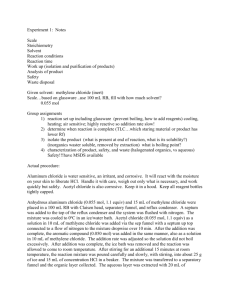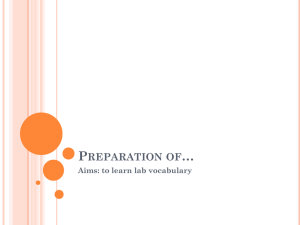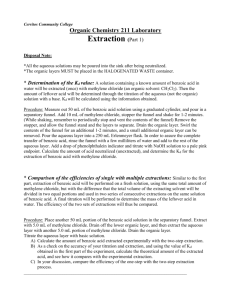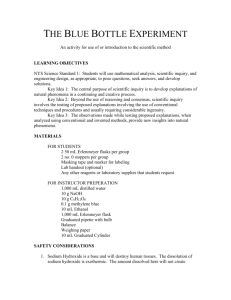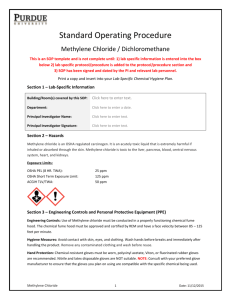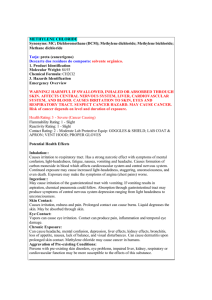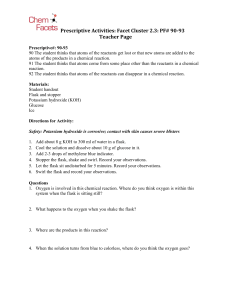Notes on Procedure for Experiment No. 25 – Week 1
advertisement
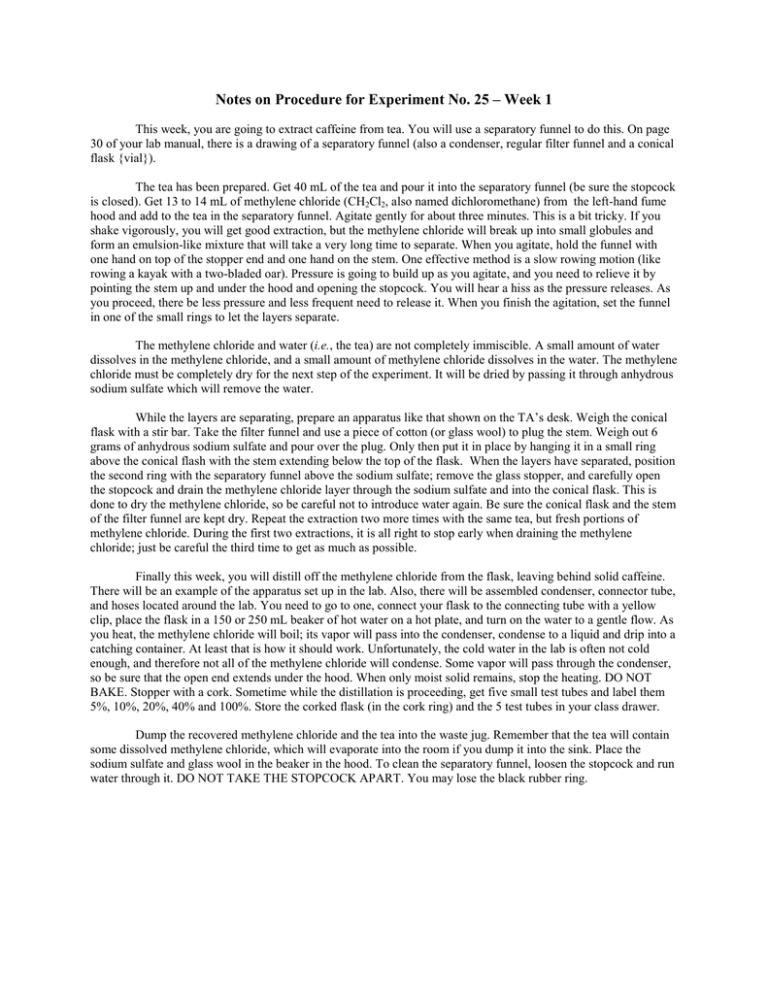
Notes on Procedure for Experiment No. 25 – Week 1
This week, you are going to extract caffeine from tea. You will use a separatory funnel to do this. On page
30 of your lab manual, there is a drawing of a separatory funnel (also a condenser, regular filter funnel and a conical
flask {vial}).
The tea has been prepared. Get 40 mL of the tea and pour it into the separatory funnel (be sure the stopcock
is closed). Get 13 to 14 mL of methylene chloride (CH2Cl2, also named dichloromethane) from the left-hand fume
hood and add to the tea in the separatory funnel. Agitate gently for about three minutes. This is a bit tricky. If you
shake vigorously, you will get good extraction, but the methylene chloride will break up into small globules and
form an emulsion-like mixture that will take a very long time to separate. When you agitate, hold the funnel with
one hand on top of the stopper end and one hand on the stem. One effective method is a slow rowing motion (like
rowing a kayak with a two-bladed oar). Pressure is going to build up as you agitate, and you need to relieve it by
pointing the stem up and under the hood and opening the stopcock. You will hear a hiss as the pressure releases. As
you proceed, there be less pressure and less frequent need to release it. When you finish the agitation, set the funnel
in one of the small rings to let the layers separate.
The methylene chloride and water (i.e., the tea) are not completely immiscible. A small amount of water
dissolves in the methylene chloride, and a small amount of methylene chloride dissolves in the water. The methylene
chloride must be completely dry for the next step of the experiment. It will be dried by passing it through anhydrous
sodium sulfate which will remove the water.
While the layers are separating, prepare an apparatus like that shown on the TA’s desk. Weigh the conical
flask with a stir bar. Take the filter funnel and use a piece of cotton (or glass wool) to plug the stem. Weigh out 6
grams of anhydrous sodium sulfate and pour over the plug. Only then put it in place by hanging it in a small ring
above the conical flash with the stem extending below the top of the flask. When the layers have separated, position
the second ring with the separatory funnel above the sodium sulfate; remove the glass stopper, and carefully open
the stopcock and drain the methylene chloride layer through the sodium sulfate and into the conical flask. This is
done to dry the methylene chloride, so be careful not to introduce water again. Be sure the conical flask and the stem
of the filter funnel are kept dry. Repeat the extraction two more times with the same tea, but fresh portions of
methylene chloride. During the first two extractions, it is all right to stop early when draining the methylene
chloride; just be careful the third time to get as much as possible.
Finally this week, you will distill off the methylene chloride from the flask, leaving behind solid caffeine.
There will be an example of the apparatus set up in the lab. Also, there will be assembled condenser, connector tube,
and hoses located around the lab. You need to go to one, connect your flask to the connecting tube with a yellow
clip, place the flask in a 150 or 250 mL beaker of hot water on a hot plate, and turn on the water to a gentle flow. As
you heat, the methylene chloride will boil; its vapor will pass into the condenser, condense to a liquid and drip into a
catching container. At least that is how it should work. Unfortunately, the cold water in the lab is often not cold
enough, and therefore not all of the methylene chloride will condense. Some vapor will pass through the condenser,
so be sure that the open end extends under the hood. When only moist solid remains, stop the heating. DO NOT
BAKE. Stopper with a cork. Sometime while the distillation is proceeding, get five small test tubes and label them
5%, 10%, 20%, 40% and 100%. Store the corked flask (in the cork ring) and the 5 test tubes in your class drawer.
Dump the recovered methylene chloride and the tea into the waste jug. Remember that the tea will contain
some dissolved methylene chloride, which will evaporate into the room if you dump it into the sink. Place the
sodium sulfate and glass wool in the beaker in the hood. To clean the separatory funnel, loosen the stopcock and run
water through it. DO NOT TAKE THE STOPCOCK APART. You may lose the black rubber ring.


